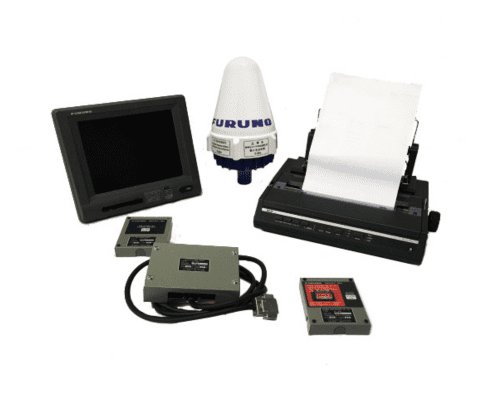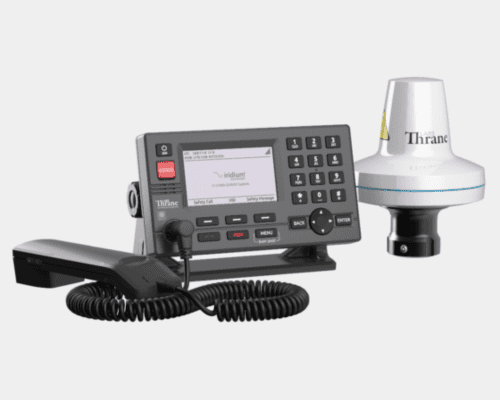Safety at Sea: Inmarsat C Vs Iridium GMDSS
In recent decades much has been done to improve safety at sea, including the introduction of robust and streamlined safety measures. A 2022 report by Inmarsat suggests that this continued focus on regulations is paying off, with a steady decline in vessels lost, dropping from 65 in 2020 to 54 in 2021. However, despite this, the industry is seeing an increase in Global Maritime Distress and Safety System (GMDSS) calls.
Introduced in 1999, the Global Maritime Distress and Safety System (GMDSS), is an internationally recognised set of protocols procedures, and communication equipment that is designed to enhance safety and improve emergency communication at sea. Developed by the International Maritime Organisation (IMO), the system is mandatory for all vessels over 300 gross tonnages, engaged in international voyages.
How does GMDSS work?
At a basic level, GMDSS uses a combination of satellite and terrestrial communication systems to provide reliable and efficient communication between vessels at sea and shore-based authorities. This means that in an emergency, a vessels GMDSS system will send the distress signal directly to shore, more specifically to a maritime rescue coordination centre (MRCC) who will implement an emergency response. Prior to this, as most famously witnessed with the Titanic, vessels relied on their own ability to alert other ships in order to obtain assistance.
Whilst the GMDSS equipment required onboard will vary from ship to ship depending on vessel size, type and itinerary, a key component is a satellite-based communication system.
Inmarsat-C
The Inmarsat-C system is currently used on the majority of vessels around the world, providing the mechanism to send and receive distress alerts, safety messages, and general communication. Vessels can call for help at the push of a button, with the ships exact position, course and speed automatically transmitted to the nearest MRCC (there are a total of 14 MRCCs).
It is an affordable solution that is easy to install and maintain. The terminal consists of a transceiver unit, antenna, control display and printer. It enables the vessel to establish a satellite connection and exchange data messages. The control display unit provides an interface for sending and receiving messages, accessing system settings, and monitoring the status of the communication link.
Whilst the low price point makes it an accessible solution for all vessels, Inmarsat-C operates on low bandwidth, and is designed to be used for text-based messaging and small data files. A disadvantage of the system is that voice communication is not supported, therefore it can’t be used for real-time conversation.
In terms of coverage, Inmarsat-C provides global connectivity, however it does operate using geo-stationary satellites. These satellites remain fixed relative to the Earth’s surface. As a result, there may be certain limitations or variations in coverage performance in the polar regions.

Iridium GMDSS
Whilst being far from a new player in the market, Iridium deployed its first constellation in 1997-2002, the companies GMDSS solution was only approved and certified by the IMO in 2018. The service, which has been available since 2020, is marketed as providing ‘truly global coverage’. Unlike its competitor, Iridium’s system operates using a low earth orbit (LEO) satellite constellation (66 cross-linked satellites).
Due to their close proximity to the earth, LEO satellites are able to provide enhanced coverage in the polar regions, even in adverse weather conditions. The Arctic and Antarctic waters in sea area A4 are amongst the most dangerous in the world, Iridium GMDSS provides a solution for this previously unserved area.
A strong difference between Iridium GMDSS and it’s more established counterpart Inmarsat-C is its ability to support real-time communication, including voice calls. This enables the crew to communicate directly with the maritime authority in an emergency, and provide additional details about the distress situation. This voice call feature also acts as an additional offshore connection, adding versatility to the service, as it can be used for more than just safety. Iridium’s offering is also an upgrade in terms of bandwidth and data speeds, due to the low latency of LEO satellites.
In terms of equipment, the Iridium terminals are slightly smaller than those required for the Inmarsat-C service and are typically more affordable. The Iridium terminal, the LT-3100S developed by Lars Thrane, supplies GMDSS, LRIT and SSAS services. In addition, there is no requirement for a message terminal or printer.

Inmarsat-C
- Coverage: Global coverage except for the extreme polar regions.
- Data Speeds: Low speed – data rates of up to 0.6Kbps.
Iridium GMDSS
- Global coverage, including the polar regions.
- Data Speeds: Faster than Inmarsat-C – supports (SBD) messaging at speeds of around 2.4 Kbps
Which solution is right for you?
When it comes to making a decision regarding the two services, key factors to consider are the safety requirements of your vessel in terms of its planned itinerary, your onboard communication requirements and regulatory compliance. As mentioned above, Iridium GMDSS offers clear safety and service advantages to vessels cruising the less explored waters of the polar regions, however for a Med based vessel, with budget restrictions, the well-established Inmarsat-c system may be an effective option.
Both communication systems comply with the GMDSS requirements and service the purpose of providing reliable distress alerting for vessels worldwide. However, as Iridium is relatively new to the market, and is gradually gaining acceptance, we recommend checking directly with your vessels flag state to ensure you’re meeting all their individual regulatory requirements.
The approval and gradual implementation of Iridium GMDSS is a positive step towards the continued improvements of safety at sea. The new system offers some clear advantages and advancements over its older rival, and some healthy competition may breed even greater innovation in this space.
Looking for further guidance? Please contact our sales team to learn more.
Recent Comments